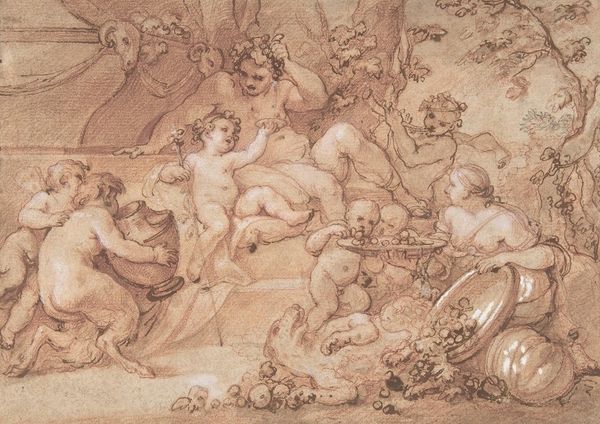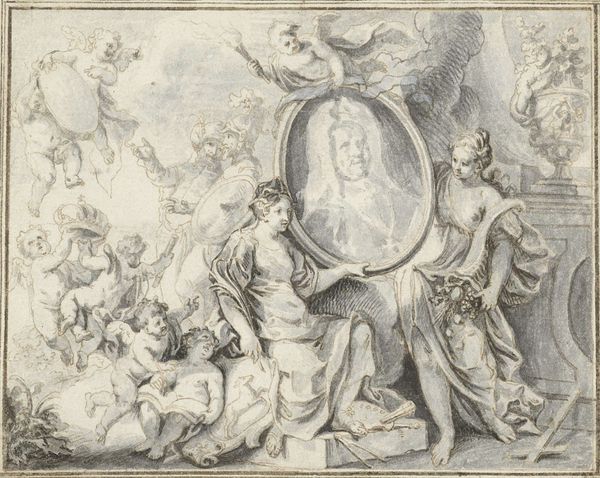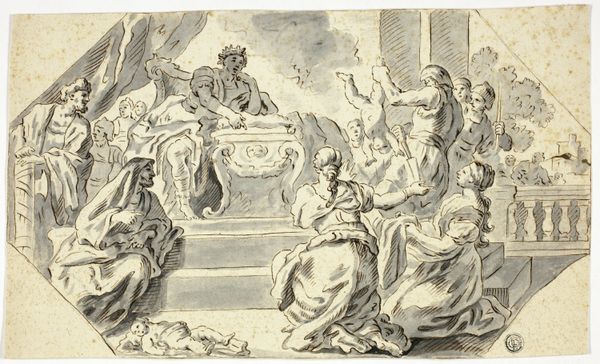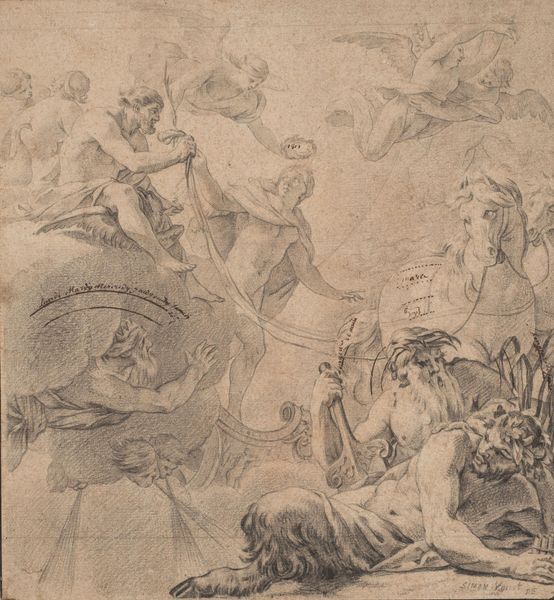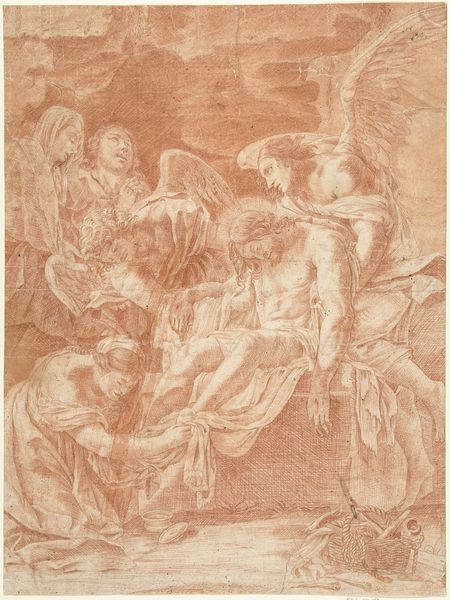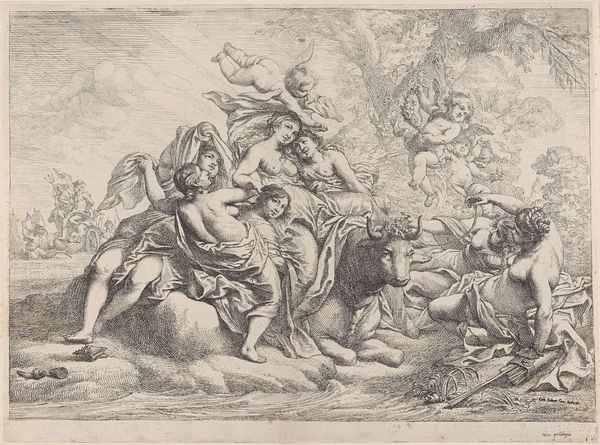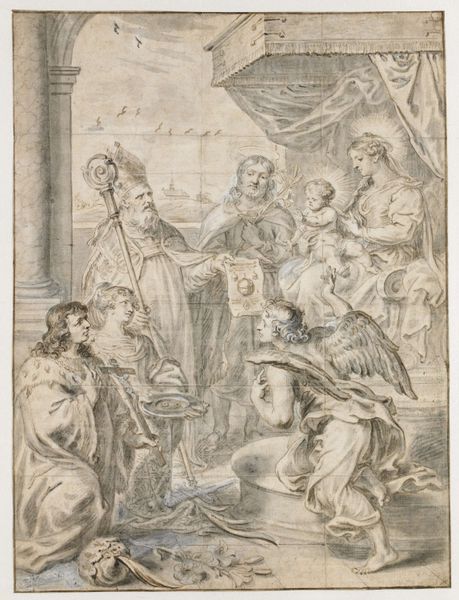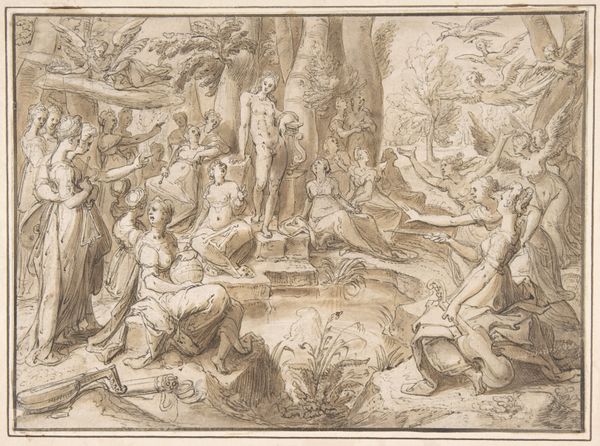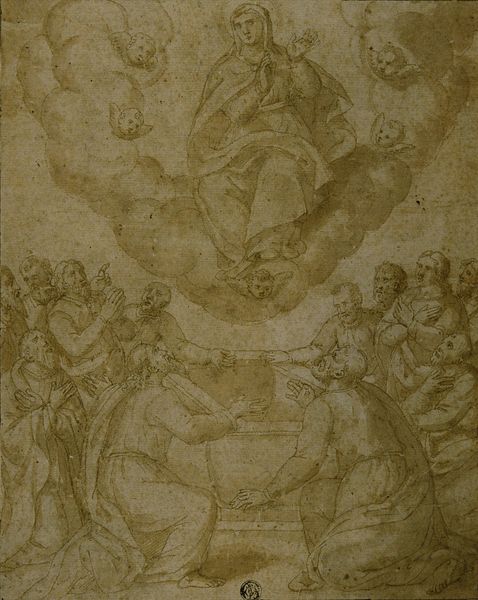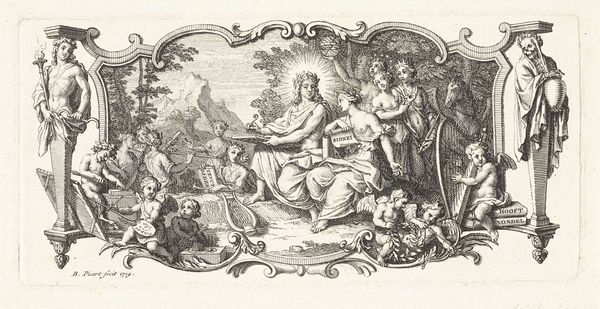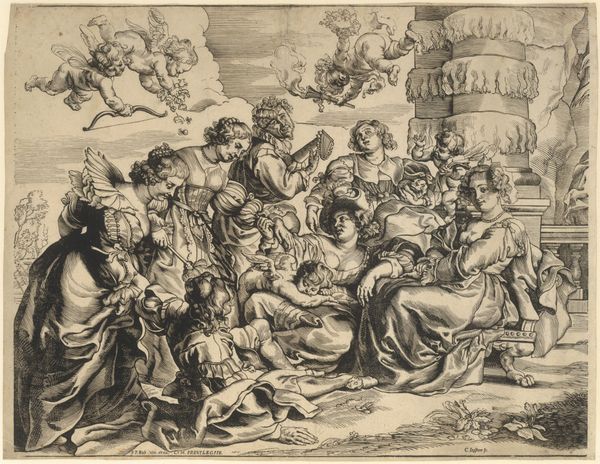
drawing, ink, pen
#
drawing
#
allegory
#
pencil sketch
#
charcoal drawing
#
figuration
#
form
#
ink
#
pencil drawing
#
mythology
#
line
#
pen
#
history-painting
#
northern-renaissance
#
academic-art
#
charcoal
Copyright: Public domain
Curator: Here we have Maarten de Vos's "Faith, Hope, and Love" from 1577, a drawing rendered in ink and pen. The piece feels rather academic in its approach, doesn't it? Editor: It's sepia-toned and surprisingly intimate. The shading is intense, giving it depth despite the monochromatic palette. I wonder what emotional impact it might have had on its original audience. Curator: Well, consider that de Vos, entrenched in the Northern Renaissance, was immersed in the prevailing humanist thought. Looking at the drawing, we see three female figures who embody the theological virtues, each defined by unique symbols. Faith is accompanied by the tablets of the law, Hope has an anchor, and Love... Love is surrounded by children, radiating affection. Editor: Absolutely. Faith holds the open book – a representation of divine law and knowledge – her gaze directly confronts the viewer, quite commanding. And Hope, clad in simpler drapery, literally leans into her attribute – a sign of her stability. And Love, literally embraced by cherubs, almost emanates maternal warmth and charity. Note, too, how De Vos arranges them almost like figures on a stage: the linear and tactile presence is extremely carefully choreographed. Curator: Precisely. And beyond this surface dynamism, there's more to dissect about the very execution and materials. This isn’t a painting laden with expensive pigments; instead, it's ink and pen, lending themselves to accessibility. The artwork's value is thus shifted. De Vos emphasizes the transmission of the virtues, perhaps pointing towards widespread literacy and the emerging accessibility to spiritual thought through printed material. Editor: Interesting. If that’s true, the pen itself could also signify the power of the written word, of scripture, and the shift from oral to written tradition. Moreover, there’s an undeniably personal touch evident through each and every line. The artist, in his conscious material choices, becomes not just a craftsman, but also an intellectual contributor. Curator: You're absolutely right; his line work underscores both meticulous design and inherent vulnerability. It seems de Vos urges a direct engagement with not only these virtues, but also with the very human struggle to obtain them. Editor: Ultimately, de Vos successfully merges both allegorical profundity and his own artistry, achieving resonance through skillful and purposeful use of accessible means. Curator: Agreed. It reveals itself as more than a history lesson, presenting it, instead, as an artifact invested with emotional significance through artistic execution.
Comments
No comments
Be the first to comment and join the conversation on the ultimate creative platform.
